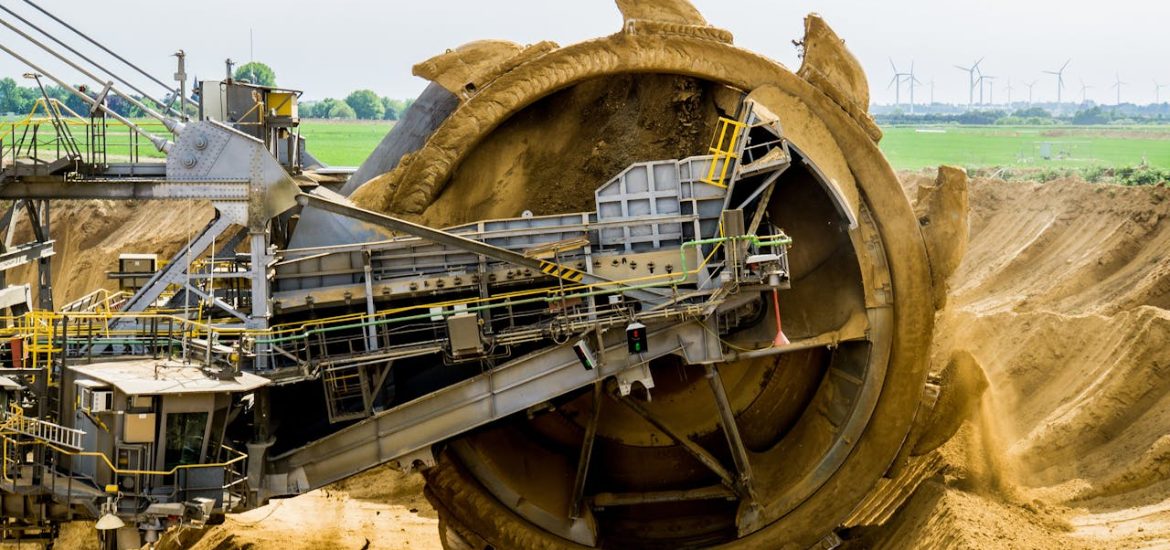Mining is the process of extracting valuable minerals or other geological materials from the earth, typically from ore bodies, lodes, veins, seams, or reefs. Different mining methods are used depending on the location, geology, and the type of material being extracted. Each method has its advantages, challenges, and environmental impacts. Here, we will explore five of the most common types of mining: surface mining, underground mining, placer mining, in-situ mining, and mountaintop removal mining.
1. Surface Mining
Surface mining, also known as open-pit or strip mining, is one of the most common types of mining. It involves removing layers of earth to access minerals located close to the surface. This method is typically used for extracting materials like coal, iron ore, and copper. There are several forms of surface mining:
- Open-pit mining: Involves creating a large pit in the ground to extract ore. It’s commonly used for materials that are evenly distributed across large areas.
- Strip mining: Used primarily for coal extraction, strip mining involves stripping away long horizontal layers of earth to access minerals close to the surface.
- Quarrying: This method is used to extract building materials like stone, gravel, and sand.
Surface mining is often preferred by mining contractors due to its cost-effectiveness and ease of operation. However, it has a significant environmental impact, as it leads to the destruction of landscapes and ecosystems.
2. Underground Mining
Underground mining is used when mineral deposits are located deep beneath the earth’s surface. This method involves creating tunnels and shafts to reach the ore. There are several techniques within underground mining, including:
- Room and pillar mining: Large rooms are excavated, leaving pillars of material to support the roof of the mine.
- Longwall mining: A more efficient method where a large section of the mine is mined in a single slice.
- Block caving: A method used for low-cost, large-scale extraction, where the ore body is undercut, causing the ore to collapse under gravity.
Underground mining has less surface disruption compared to surface mining, but it presents higher risks for miners due to the potential for collapses, gas leaks, and flooding. It is commonly used for extracting valuable metals like gold, silver, zinc, and lead.
3. Placer Mining
Placer mining is a method of extracting valuable minerals from riverbeds, sand, or gravel deposits. It’s one of the oldest methods of mining, dating back to ancient times, and is primarily used to find gold, gemstones, and tin. There are different techniques within placer mining:
- Panning: A manual technique where water and sediment are swirled in a pan to separate heavy metals like gold from lighter materials.
- Sluicing: Water is directed through a sluice box to separate valuable minerals from sediment.
- Dredging: Large machines are used to scoop up sediment from the bottom of bodies of water, which is then sorted for valuable minerals.
Placer mining is typically less intrusive than other methods but can still have a significant environmental impact on waterways and aquatic ecosystems.
4. In-situ Mining
In-situ mining, also known as solution mining, involves dissolving minerals in the ground and pumping the solution to the surface where it can be processed. This technique is commonly used for mining uranium and certain metals like copper and lithium.
In-situ mining minimizes surface disturbance as it doesn’t require the removal of large amounts of rock and soil. However, it does have environmental concerns, particularly around the contamination of groundwater, as the process involves injecting chemicals or water into the ground to dissolve the minerals.
5. Mountaintop Removal Mining
Mountaintop removal mining is a form of surface mining used to extract coal, primarily in the Appalachian region of the United States. It involves removing the tops of mountains to expose coal seams underneath. Once the coal is extracted, the leftover material is often deposited into nearby valleys, which can drastically alter the landscape.
This method is highly controversial due to its severe environmental impact, which includes deforestation, loss of biodiversity, and the destruction of entire ecosystems. However, it allows for the efficient extraction of coal deposits that would be difficult to access through other mining methods.
Conclusion
Each type of mining has its specific uses, advantages, and challenges. Surface mining is cost-effective and efficient for shallow minerals, while underground mining is essential for deep-seated deposits. Placer mining offers an ancient, environmentally lighter method, while in-situ mining minimizes surface disruption but raises concerns about groundwater contamination. Mountaintop removal mining, though efficient for coal extraction, is highly destructive to the environment. Understanding the different methods allows for a better appreciation of how mining impacts both the economy and the environment.

